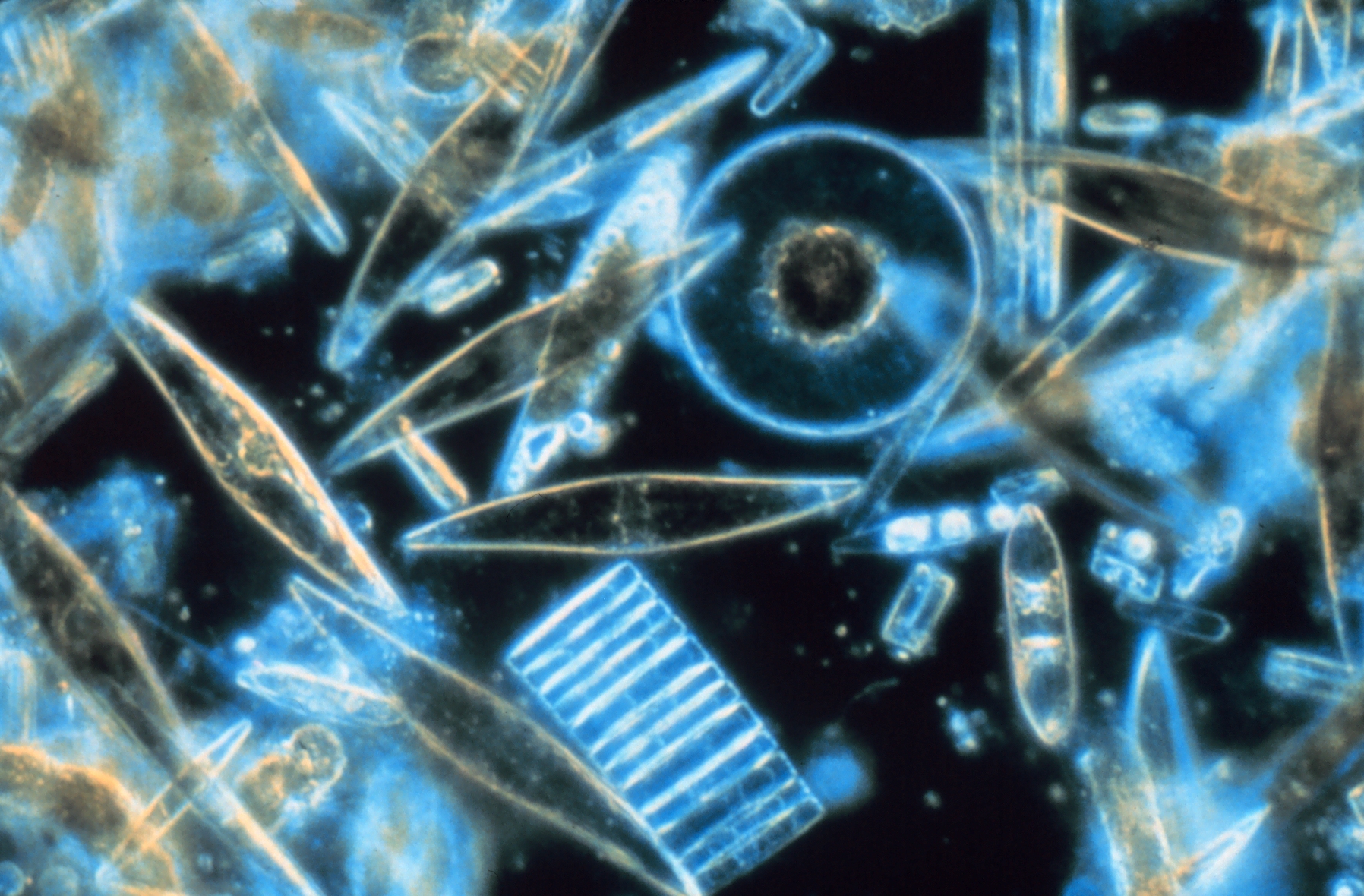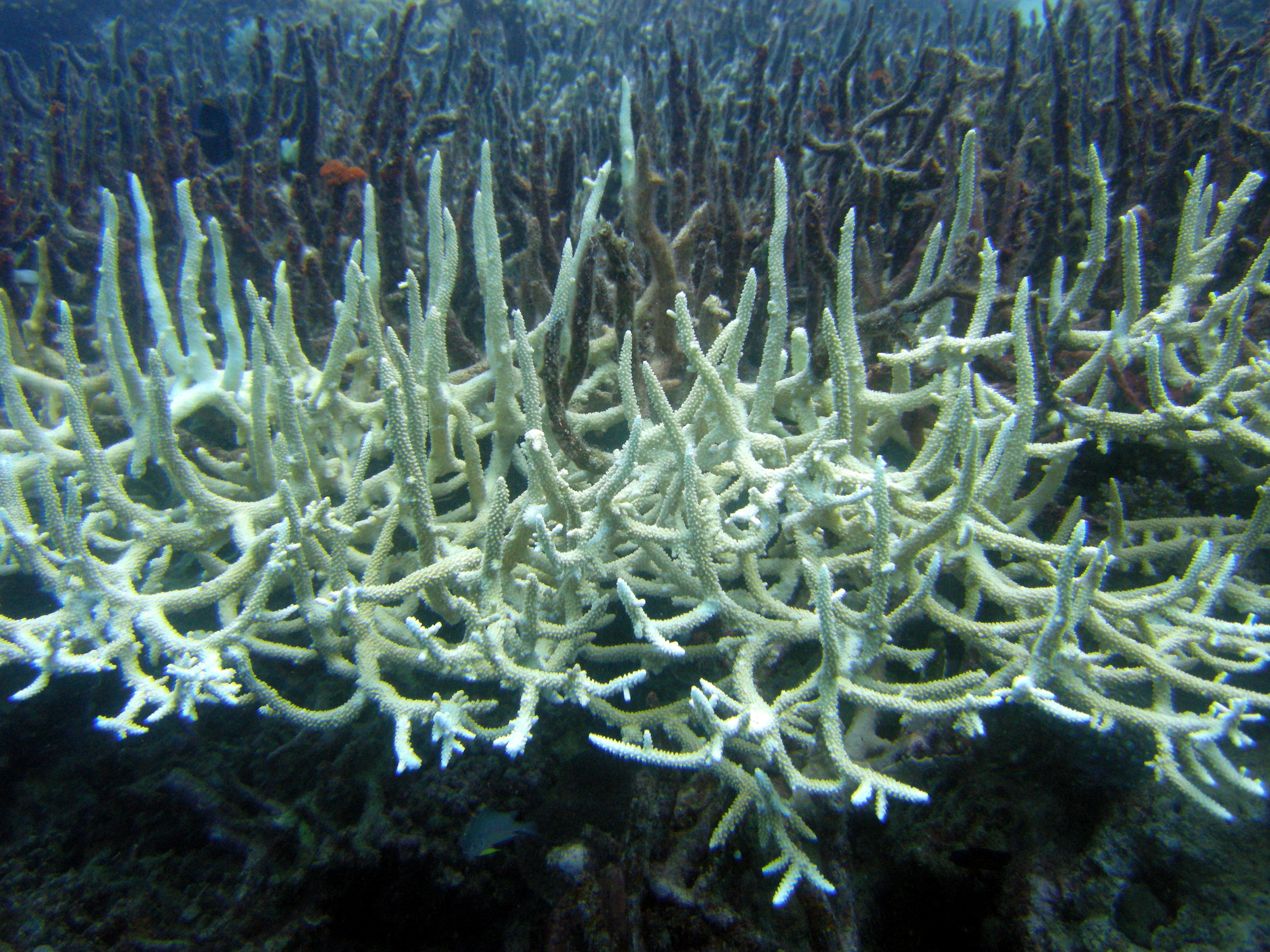8.1 Significance of the ocean
Merry Wilson
Earth has one big ocean with many features
The ocean is the defining physical feature on our planet Earth—covering approximately 70% of the planet’s surface. The vapor released into the atmosphere returns as rain, sleet, and snow, ever replenishing the planet with freshwater, which we all depend on. All life, including our own, exists because of the ocean. Our lives depend, now and forever, on the health of the ocean (Ocean Literacy Principles).
Video 8.1.1. Years 2021 to 2030 is the International Decade of Ocean Science for Sustainable Development. Learn in this video the purpose of the goal and the significance of having one ocean connecting us all. (1:20)
There is one ocean with many interconnected ocean basins, such as the North Pacific, South Pacific, North Atlantic, South Atlantic, Indian, Southern and Arctic. Ocean basins are composed of oceanic crust, the top of which is the seafloor. The seafloor is not a flat and uniform, instead it has islands and deeps, ridges and trenches, and rift valleys and plateaus, all geologic features. The ocean basins vary in size, shape and sea-scapes due to plate tectonics. How would Earth look like without ocean water? For millennia, humans did not know the answer to this question. But recent discoveries have proved that the bottom of the ocean is as rich in forms as our surrounding landscapes. These physical features of our ocean influence or determine the marine life found within the basins.
Video 8.1.2. The sea floor is not uniform and smooth, but rugged and diverse in its forms. This animation shows the Earth without ocean water. Do you see why there is only once ocean? (00:52).
The ocean is an essential part of Earth’s water cycle. Since it covers so much of the planet, most evaporation comes from the ocean, and most precipitation falls in the ocean. The ocean is connected to major lakes, watersheds, and waterways because all major watersheds on Earth drain to the ocean. Rivers and streams transport nutrients, salts, sediments, and pollutants from watersheds to coastal estuaries and to the ocean.
The ocean supports a diversity of life and ecosystems
The ocean is home to a great diversity of life. Ocean life ranges in size from the smallest living things, microbes, to the largest animal on Earth, blue whales. But most of the organisms in the ocean are microbes, which are the basis of all ocean food webs. Microbes are the most important primary producers in the ocean. Common microscopic life includes the phytoplankton–microscopic plants and bacteria. And we are all in debt to these tiny organisms.
Phytoplankton is at the base of the aquatic food web. Phytoplankton thrive in the shallow and warm parts of the ocean, such as the continental shelves. Similar to land plants, they contain chlorophyll and live on sunlight, consuming CO2 and producing oxygen. That’s right, oxygen for all of us to breathe! This is part of the reasons why the ocean dominates the carbon cycle. Half of the primary productivity on Earth takes place in the sunlit layers of the ocean. The ocean absorbs roughly half of all carbon dioxide and methane that are added to the atmosphere. Read more about the importance of phytoplankton here, on NASA’s Earth Observatory page. Without phytoplankton, we would not have fish to consume and our oxygen levels would be very depleted.

The Ocean is a force for weather and climate
Earth would be a significantly different planet without the ocean, hostile to life or completely uninhabitable. The oceans, along with Earth’s atmosphere, keep surface temperatures relatively constant around the globe. Together, they moderate the climate. But how? The ocean absorbs most of the solar radiation reaching Earth. This regulation makes our planet different from say, Venus, Mars or our moon, where the temperature variation is extreme from day to night.
But there is an active heat exchange between the ocean and the atmosphere. This heat exchange drives the water cycle and oceanic and atmospheric circulation in the form of winds, ocean currents, eddies, storms, jet streams, etc. Video 8.1.3. explains how the ocean, coupled with the atmosphere, drives the weather and climate on our planet.
Video 8.1.3. Using NASA’s satellite data, this animation highlights key processes between the ocean and the atmosphere that impact every other Earth system (See Ch. 1, Earth systems; 6:00).
Heat exchange between the ocean and atmosphere can result in dramatic global and regional weather phenomena, impacting patterns of rain and drought. Significant examples include the El Niño Southern Oscillation and La Niña, which cause important changes in global weather patterns because they alter the sea surface temperature patterns in the Pacific. Another example is the formation of hurricanes and cyclones in warm oceans.
The ocean influences the climate by absorbing, storing, and moving heat, carbon, and water. Changes in the ocean-atmosphere system can cause changes to the climate that, in turn, cause further changes to the ocean and atmosphere. These interactions have dramatic physical, chemical, biological, economic, and social consequences. (0)
Composition of ocean water
Seawater has unique properties. It is salty, its freezing point is slightly lower than fresh water, its density is slightly higher, its electrical conductivity is much higher, and it is slightly basic. Balance of pH is vital for the health of marine ecosystems. Our ocean is a buffer solution, similar to our blood. A buffer solution is able to maintain the pH within a narrow range; it balances the addition of acids or alkalis. This self-regulation pattern is key for us and for the climate. This is because the pH controls the rate at which the ocean will absorb and buffer changes in atmospheric carbon dioxide CO2 (0). If the ocean becomes acidic, it cannot absorb carbon dioxide the way it has been doing it. In fact, at some point, the ocean can go from a sink for CO2 to a source, releasing the vast amounts that are dissolved in ocean water. This is one problem of ocean acidification.
The ocean’s water is a complex system of organic and inorganic substances. Water is the universal solvent. Thus, runoff and water moving through continents, and weathering rocks and soils on land, deliver ions, sediment, and a great variety of compounds to the ocean. Salts comprise about 3.5 percent of the mass of ocean water, but the salt content or salinity is different in various locations. (1) These variations in salt content produce ocean currents.
The ocean and humans are inextricably interconnected
The ocean affects every human life. We are all interconnected through our ocean. The ocean supplies freshwater as rain and nearly all Earth’s oxygen! The ocean moderates the Earth’s climate, influences our weather, and affects human health. Food, medicines, and mineral and energy resources all come from the ocean.
Our ocean supports jobs and national economies, serves as a highway for transportation of goods and people, and plays a role in national security. The ocean feeds our spirit and minds too. The ocean is a source of inspiration, recreation, rejuvenation, and discovery. It is also an important element in the heritage of many cultures, such as the rich cultures of the Pacific Islands, and many identify as coming out of the ocean, the Mother Ocean. Indeed, our ocean is the cradle of life; the earliest evidence of life is found in the ocean. The millions of different species of organisms on Earth today are related by descent from common ancestors that evolved in the ocean and continue to evolve today.
Humans affect the ocean in a variety of ways. Laws, regulations, and resource management affect what we take out and put into the ocean. Human development and activity leads to pollution, changes to ocean chemistry (ocean acidification), and physical modifications (changes to beaches, shores, and rivers). In addition, humans have removed or killed most of the large vertebrates from the ocean.
Changes in ocean temperature and pH due to human activities can affect the survival of organisms and impact biological diversity. Examples are coral bleaching due to increased temperature and inhibition of shell formation due to ocean acidification. Much of the world’s population lives in coastal areas. Coastal regions are susceptible to natural hazards (tsunamis, hurricanes, cyclones, sea level change, and storm surges).

The ocean is largely unexplored
Less than 15% of the ocean has been explored, making it the least explored part of our planet. The next generation of explorers and researchers will find great opportunities for discovery, innovation, and investigation.
Understanding the ocean is more than a matter of curiosity. Exploration, experimentation, and discovery are required to better understand ocean systems and processes. Our very survival hinges upon it. The field of science that studies oceans is called oceanography. Researchers study the ocean in ships, research vessels and more recently, using robots, subsea observatories, unmanned submersibles in the water and satellites in space.
Ocean exploration is truly interdisciplinary. It requires close collaboration among biologists, chemists, climatologists, computer programmers, engineers, geologists, meteorologists, physicists, animators, and illustrators. And these interactions foster new ideas and new perspectives for inquiries.
Video 8.1.4. The ocean remains to be explored. It is more than a matter of curiosity. Why do we need to explore the ocean? (1:22).
Key Takeaways
any plant or any of various microorganisms that can convert light energy or chemical energy into organic matter. Thus, they can produce their own food.
gently sloping, relatively shallow areas of seafloor that flank continents and is underlain by thinned continental crust.
concentration of hydrogens, a measure of acidity.
a solution that resists changes in pH when acid or alkali is added to it.

